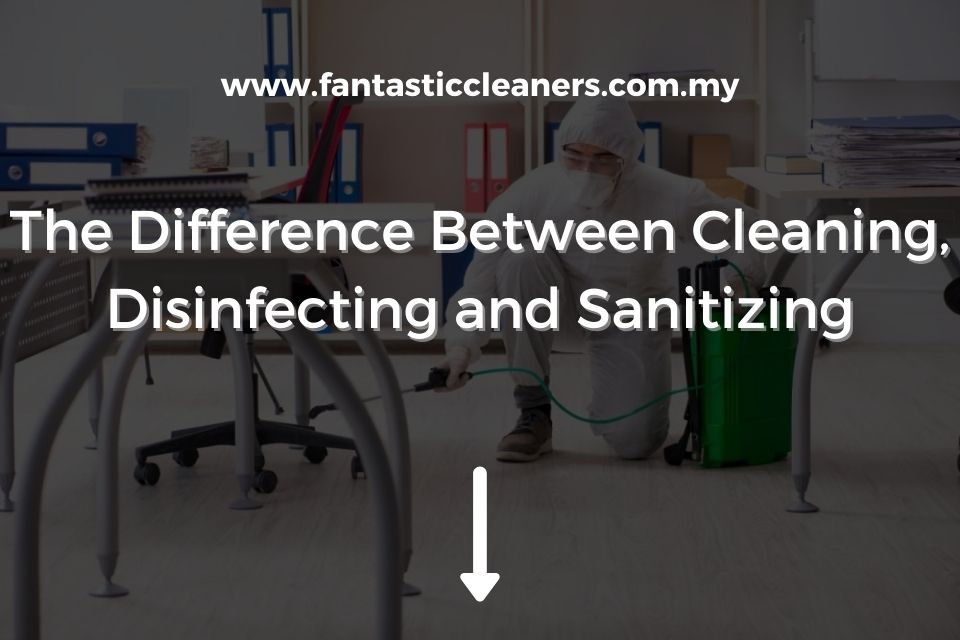Understanding that our surroundings are filled with microscopic organisms, such as bacteria, viruses, and other pathogens, is essential. These microbes are an ever-present element in our daily existence. While some offer benefits, many are harmful and can lead to a variety of illnesses and diseases. These tiny organisms can inhabit both our bodies and the various objects and surfaces in our homes. They have the ability to proliferate quickly and spread either through direct contact (like from person to person or through droplets) or indirectly (such as through the air or by touching contaminated items).
There are ways to protect ourselves from getting infected by germs and viruses. The most common and easiest way is through frequent proper washing of our hands using some anti-bacterial soap and keeping those commonly touched objects and surfaces clean. Things get complicated when people do sanitation and disinfection in their surroundings.
Let’s have a look at some key points for us to understand more the difference between cleaning, sanitizing, and disinfecting.
Table of Contents
The difference between cleaning, sanitizing, and disinfecting
Covid-19 (coronavirus) has almost paralyzed the country and threatens the health of people throughout the world. If you are responsible for the cleaning, sanitizing, and disinfecting activities for your home, you need to have a basic understanding of their principles.
Disinfecting

This process can contain and prevent the spread of infectious diseases like tuberculosis and COVID0-19. Disinfecting refers to deactivating or destroying any infectious microbes such as germs, bacteria, and viruses, that are present on any surfaces. You need proper disinfectant products while doing disinfection. Some common examples are bleach and alcohol solutions.
The primary use of disinfectants is to eliminate or greatly reduce microbial pathogens and thus prevent the transmission of disease and illness. Surfaces and objects must be thoroughly cleaned before being disinfected because dirt, food particles, dust, crumbs, and debris may interfere with the action of the disinfectant.
However, one must exercise precaution when purchasing or using disinfectants because misuse of the said products can be dangerous to your body and health. Using appropriate personal protective equipment may help or you may want to consider booking a professional disinfection cleaning service in Malaysia for your home as they have proper training and skills for this.
Cleaning

The most basic and easiest among the three. This process removes any kind of dirt, dust, crumbs, germs, and any impurities that can be seen by our eyes from objects and surfaces.
Cleaning is usually undertaken on a routine and daily basis. When you do cleaning, you will likely do scrubbing using a clean cloth, washing with soap or any detergent, and rinsing with clean water to clean off the surfaces and objects. This may not necessarily kill all the germs. Instead, it reduces the number of germs living on a surface that may cause you health problems. Nowadays, some products used for cleaning also result in disinfection.
Sanitizing

This process can be done by either cleaning, disinfecting, or both. Sanitizing also means that you are reducing the number of germs to a safe level by either killing them or removing them, just like the cleaning. But don’t confuse sanitizing with cleaning, sweeping dust and specks of dirt, wiping grimes from your counters, and dusting is a part of cleaning. Sanitizing is performed after the cleaning. The safe level is measured according to public health standards or requirements at schools, offices, restaurants, and other public or private establishments.
Also, sanitizing is one of the most essential components of the cleaning process in medical offices, senior care facilities, hospitals, food service businesses, schools, daycares, shopping malls, gymnasiums, and work environments of all types in addition to disinfecting. In sanitizing, we also use a specific solution or liquids. The difference between the solutions used for disinfection and solutions used for sanitizing goes to the fact that sanitizing solutions are not as strong as disinfecting solutions. This makes it less harmful compared to the prior one. But there are already products that can be used for both sanitizing and disinfecting.
Not to mention, it’s also important to be safe when using the cleaning, sanitizing, and disinfecting solutions.
- Store them in the containers when you bought them unless otherwise stated. Always follow the instructions and pay attention to the warnings on the label. Check the expiration date of the product.
- Do not mix cleaners, sanitizers, and disinfectants unless the labels say that it is safe to do so. Combining certain products can harm your body and cause danger to your health.
- Check the label to see whether it is dangerous to be touched by your skin. If so, you may use hand gloves or other safety equipment.
- Most importantly, store them out of the reach of children
To prevent the spread of germs, viruses, and infectious diseases, we must regularly clean, sanitize, and disinfect surfaces and objects that are often touched. You can consider and practice the things discussed above to help you effectively kill and remove all the microorganisms living in your body and home.

